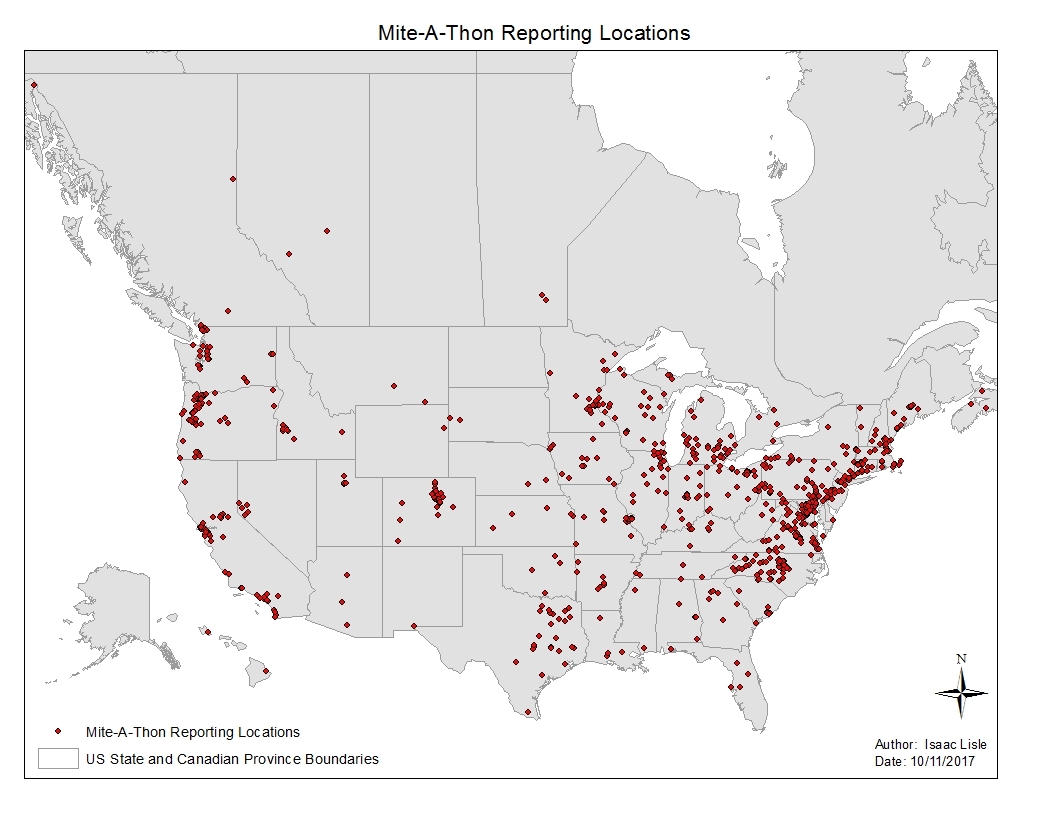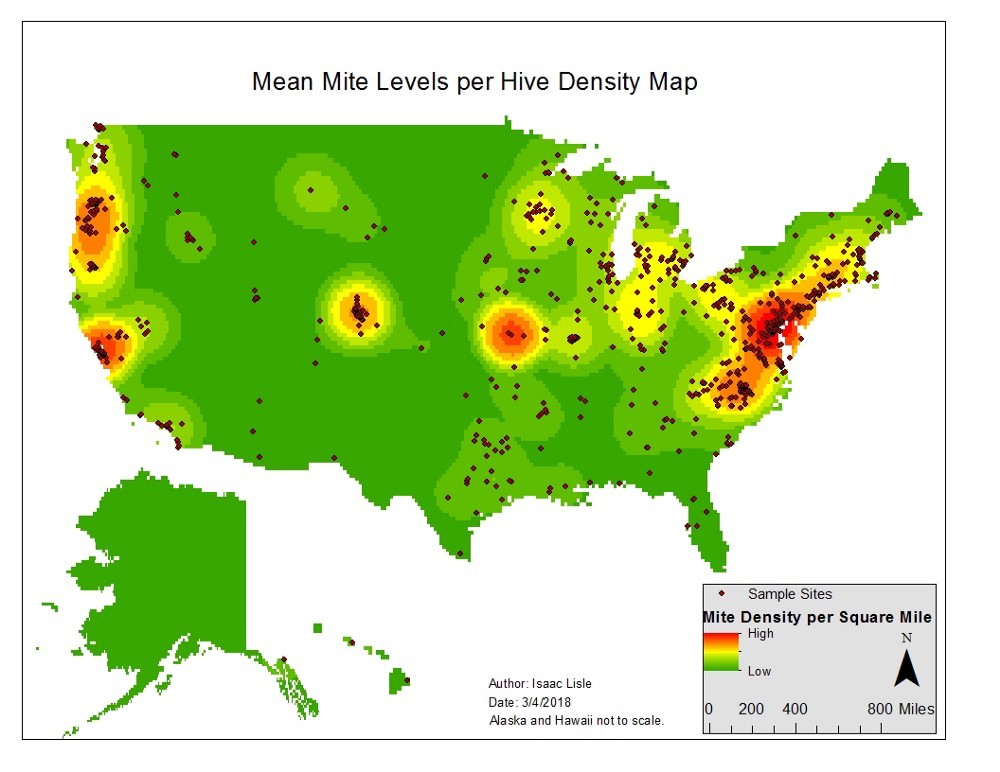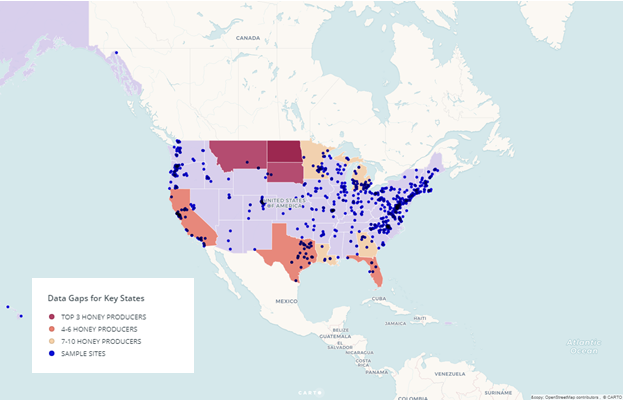2017 Mite-A-Thon Recap
By Isaac Lisle, Pollinator Partnership
The Varroa mite was introduced into North America 30 years ago from Asia, and is one of the leading stressors to the health of honey bees in North America. The presence of mites in hives is a leading indicator of the health of the hive and the percentage of bees with mites provides a way to measure the cumulative impact of other stressors such as pesticides, poor nutrition, and disease. There are significant data showing that low rates of Varroa mite infestation make overwintering success more probable.
Pollinator Partnership (P2) and the North American Pollinator Protection Campaign (NAPPC) organized the Mite-A-Thon, a citizen science initiative, to gather data on Varroa mite infestations. This initiative took place from September 9 to 16, 2017, testing honey bee hives for levels of Varroa mites all across North America just before overwintering began. Commercial, side-liner, and hobbyist beekeepers were all encouraged to participate in order to create a rich distribution of sampling sites in Canada, the United States, and Mexico. Over 900 participants reported data from across the continent, meeting the high expectations set for the initial year of the campaign.

Participants tested the level of mites present in their hives using a standardized protocol utilizing two common methods of assessment (powdered sugar roll or alcohol wash) and then uploaded their data (at www.mitecheck.com), including location, total number of hives, number of hives tested, local habitat, and the number of Varroa mites counted from each hive.
The primary objectives for this annual project are 1) to raise awareness about honey bee colony Varroa infestations in North America through effective monitoring methods and 2) to make management strategies available for discussion within bee organizations utilizing Mite-A-Thon partner developed information and outreach materials. To these ends, a density map has been created that attempts to show Varroa mite distribution in the United States based off mean mite counts.

While this data is useful, it is clearly incomplete and potentially misleading. Large swathes of the country, particularly in the west, have no reported data, yielding potentially incorrect low mite levels. Additional sample size issues are present in this data, including the fact that the highest value represented in the map is 0.0115 mites per square mile. This is almost certainly a low number due to low reporting, especially in areas with high honey bee concentrations. If one beekeeper out of 20 in the vicinity participated and reported high mite counts, it is likely that the others also had similarly high counts that went unreported.
With a better idea of the gaps in currently available data, Pollinator Partnership is seeking to increase participation in Mite-A-Thon 2018 that will take place the week of September 8. This participation is especially needed in top honey producing states because participation from these was lacking in 2017 and almost nonexistent in the top 3 states.

